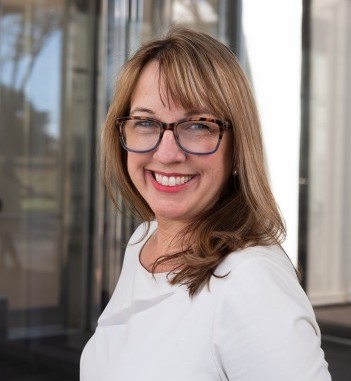Michelle Harrell has an extensive background in utilizing digital solutions for arts education and brings her experience to her home state of North Carolina. Michelle co-created the Flipped Museum model for learning as a way to improve the educational value of a visit to the North Carolina Museum of Art. This learning model was intended to provide students with learning materials before visiting the museum in order to enhance engagement for students, derive greater meaning from exhibits, and foster interpersonal interactions with other students and the museum’s offerings through digital means.
Given her innovation in growing the relationship between digital tools, museums, and arts education, I wanted to investigate how her journey into arts education became what it is today. Michelle’s family has been in North Carolina for over 10 generations, which had a strong influence on her motivation to improve educational opportunities locally. In addition to expanding on her roots, Michelle wrote that “[Her] passion to increase access to learning through art and art museums is my driving force – technology is a fabulous tool when used effectively to make experiences available to more children.”
Michelle’s work at the NCMA included incorporating omni-directional cameras and virtual reality (VR) tools into the Ansel Adams exhibition and Georgia O’Keeffe’ exhibition. Both of these projects immersed visitors in the locations and work of the artist. Omni-directional cameras were also used to create a 360-degree interactive of the NCMA Conservation Lab, providing an exclusive behind-the-scenes look into art conservation methods at the museum. I wanted to delve further into the successes, failures of these projects and how they will be used to inform future exhibitions.
Michelle emphasized a few key points to focus on when exploring new educational methods to deploy at the museum. First is to have a clear goal that the project is intended to accomplish. Michelle also wrote that “We have prioritized Social Emotional Learning as a framework for all education programs and have targeted self and social awareness…”
Secondly, when designing an educational solution, Michelle expressed the importance of designing from the margins. She referenced this method as a way to ensure inclusion for all visitors. For instance, when trying to bring VR to rural students, many people did not have access to the headsets necessary to engage in this kind of learning method. As museum staff, it is essential to be humble and be able to let go of an idea if it’s not fulfilling the audience’s needs or reaching them as the project intended. She also mentioned that “Our education team is small and mighty but it’s easy to get excited about new technological possibilities (bells and whistles) and not have the resources to support it.”
Third, Michelle addressed my questions regarding how she determines which strategies are effective (and not) for educators and students, and what successes she’s had along the way. In addition to her previous comments on incorporating the user into testing, she wrote that “The biggest success was using the design process as a human-centered approach for innovative work. Incorporating the audience into the design process was key to determining which strategies worked and didn’t work- they simply told us. Funding, internal buy-in, and conflicting institutional priorities were some of our greatest challenges..”
My time with Michelle was highly informative and I enjoyed discovering how her real-world experiences applied to our learning objectives in digital engagement projects for museums.
